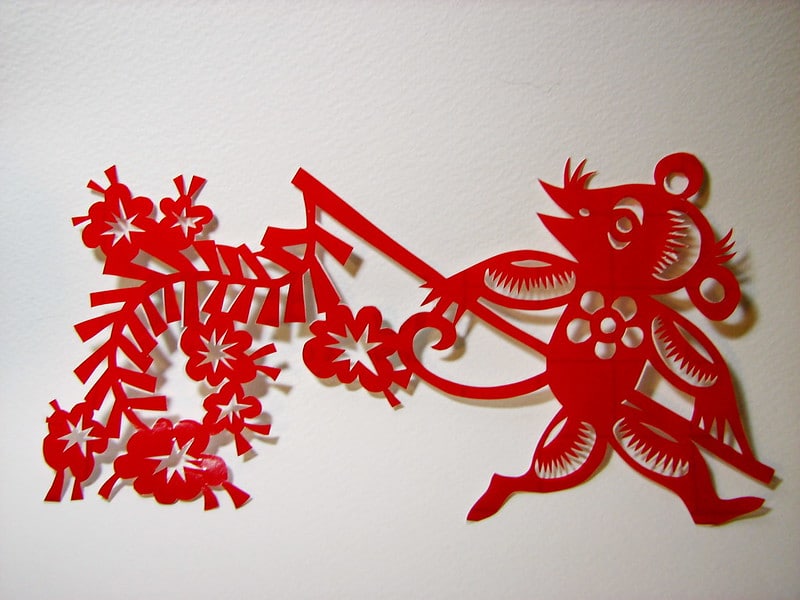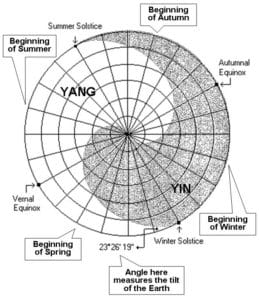While the Western New Year starts on the 1st of January 2020, the Chinese New year starts this time on the 25th of January 2020. That is, according to the moon calendar…Chinese use a bi-calendar, both moon and solar based, and the solar date is a different one! This calendar is known as the farmers’ calendar or Hsia calendar. In this article I am going to explain all the different dates relating to the Chinese New Year, and why you should celebrate even if you are from another culture. Let’s see the Chinese calendar and understand when the Chinese Year of the Metal Rat starts in 2020.
When does the Chinese Yang Metal Rat year of 2020 start?
Out of the 12 Chinese animals of the zodiac, it is the Rat sign that rules this year 2020. The previous Rat year was 2008 and the next one will be 2032. A Yang Metal Rat sign, to be more precise. This Chi (energy) of the year there brings a mix between the Yang Metal, akin to a nugget of precious metal; and the Water contained in the Rat sign. The Metal on top feeds the Water below, and it is a productive cycle, but one that is problematic as there is no heat in this year…I will soon post my yearly forecast and predictions for 2020 on this site www.laurentlanglais.com
So when does the Chinese New Year start in 2020? The answer is not that simple. With the Chinese system of metaphysics and calendar, it is always a bit complex and also more accurate. Most of you have noticed by now that the Chinese New Year date seems to change every year, contrary to the Western one. This can seem odds until you see what it is based on.
This changing date is devised on a lunar year. It takes about 29.5 days for the moon to make a full orbit around our planet earth. This is one lunar month. A lunar year is made of 12 lunar months. 12 x 29.5 = 354 days for a lunar year. As you are all smart readers, you’ll notice that 354 is shorter than 365 days. This explains why the start of the Chinese year is different each time.
To compensate for the shorter year compared to the solar one, Chinese people add an extra lunar month every 3 years. An intercalary month somehow…Why every 3 years? Well there is 11 days difference between a lunar and solar year. After 3 years have fully passed, we have a 3 x 11 = 33 days difference. It is close to the 29.5, and so the time to add the extra month to balance out the whole system is on this third year. And so by adding this extra lunar month in the system, there is never a huge gap growing between the lunar and solar year. Those years with one extra lunar month are known as leap years. The Rat year of 2020 is actually a leap year with the extra lunar month to compensate.
Right! I hope you are still following. With this lunar year of 354 days…
The year of the Yang Metal Rat starts on the 25th of January 2020 for the lunar calendar.
This is the first date to remember. Now as we have Yin and Yang forces, Chinese people account for both moon and sun. The second date is based on a regular solar year of 365 days. The start is however not based on the solar solstice. It is a different logic, which I explain in the next paragraph. This solar start of the year is usually on the 3rd, 4th or 5th of February.
The solar date for the year of the Rat 2020 is on the 4th of February 2020.
This is the second date to remember. It is the one we take for some calculations in Chinese metaphysics, like the Bazi chart or the Qi Men Dun Jia oracle. It precisely will begin on February 4, 2020 at 5:18pm.
Now that you know the 2 dates, you might wonder why it is relevant to your life; especially if you are from a culture that is not Chinese…
I am not Chinese: why should I celebrate the Chinese New Year?
The simple answer is that astrologically and astronomically, it makes much more sense. The Western year and its start on the 1st of January is a convention. Not to say that conventions have no effects on our lives, far from it. They however reflect the human part in the concept of the cosmic trinity: the taoist 3 lucks. Actually, for a long time the start of the year was on the 1st of April – and I am not joking! The start of the year on the 1st of January is based more on the logic of people who wants to control natural cycle and impose a human vision on it. A start of the year based on the movement of the planets is a different logic; one where we, humans, acknowledge that there are greater forces than our will influencing our lives, and that we want to be in harmony with them.
So to summarise the Western start of the year is more a control freak logic, while the Chinese start of the year is attuned with natural laws.
The further proof that the date of the 1st of January is a civil one rather than astronomical, you can look at the history of civilisations. Depending of whom you consider – Mesopotamians, Egyptians, Greeks, Celts – the date for such celebration was based on the different equinox and solstices, which make more sense. The vernal equinox around the 20th of March, the autumnal equinox around the 20th of September, or the Winter solstice around the 20th of December. The Romans at some point celebrated their year on the 1st of April, close to the Vernal equinox. The custom of celebration on that day was somehow kept with the April’s fool, but the move to the 1st of January is something else. It was introduced in 1582 by the Gregorian calendar, a decision made by Pope Gregory XIII. And so as you can see it is a Christian decision that reshaped Western civilisations, but as nothing to do with the greater movements of nature and the Universe.
And so which dates should we logically consider to start a new year? Solstice and equinox were indeed a good logic. The boreal Winter solstice is now around the 22nd of December. In the Northern hemisphere it is the shortest day of the year; after that, the days get longer. Which means that the Yang energy grows again from this point onward, until it reaches its peak in summer. So astrologically, a date around the 20th or 22nd of December could be the start of a year.
However this is not what Chinese people use, however. That would be too easy!
Based on lunar and solar movement now, the two dates that start a Chinese year are aligned with a new orbit for the moon around the earth, or for the Earth around the Sun. Those two dates chosen for the Chinese year therefore also make sense as they represent a real shift in energy.
You will notice that this year both dates are quite apart: there is actually 11 days separating the lunar and solar start! It is therefore ideal to start to do the preparations for the shift of energies from the 25th of January, and finish with a celebration on the 4th of February. I will soon publish my annual article to be lucky and prepare for the shift.
To summarise, the movements that represents change of Chi between September and February are:
- The autumn equinox, around the 20th of September
- Samhain/Halloween, half way through the autumn equinox and winter solstice (31st of October)
- The December solstice. On the next day, the Yang energy grows again and the Yin decline in the Northern hemisphere. A good case could be made for this date to be the “real” beginning of the year.
- The lunar start of the year in either January or February. To be technical: it must start on the 11th lunar month and is based on a new moon during this period. This is the time of the year when the moon starts a whole new cycle.
- The solar start of the year in February, when the Sun is at 315 degree exactly. It usually falls on the 4th of February, but can be on the 3rd or 5th. This is the beginning of the new solar cycle for a year and for Chinese the beginning of the Spring season.
Culturally of course the 1st of January has a weight, but it has more to do with numerology and cultural customs. In term of real shift of the Chi and start of new energies, those astronomical events which are the lunar and solar start of a cycle are more logical. This is also the reason why the influences of the Chinese New Year can already start after the December solstice (Yang energy rising) but this is foreplay; the real shift is with the lunar and then solar starts.
By now you understand that the dates of the Chinese New Year represents a change of Chi, a new energy; the Western date is a human decision less based on natural movements. And so back to the question: why should you celebrate the Chinese New Year?
Simply put, to have a good life, your intents and actions must be in synch with the flow of the Universe. We all have the power to create part of our lives, but we are also part of something much greater. By following the movements of nature the Universe and aiming at being in synch with it, you will then be in the flow of the New Year and its energy. It comes to: swimming with the river or trying to swim upstream. Which one is effortless and will save your energy? Why one takes you somewhere else faster? Going with the flow of the river of course. You then have much better chances to bring prosperity, abundance and even love within your life by aligning your intent with the “music of the spheres”, the movement of the planets influencing us all.
So it doesn’t matter if you are Chinese or not: celebrating the Chinese New Year properly will give you higher chances to be lucky and manifest the life you want in 2020, year of the Yang Metal Rat. Celebrate it both on the 4th of February 2020 (solar calendar) and on the 25th of January 2020 (lunar start).
And to not miss any update, you can follow my Facebook page on Feng Shui and Bazi.



Pingback: 13 Feng Shui tips for a lucky year of the Rat 2020! – Laurent Langlais
Pingback: The Feng Shui guide for 2020: Chinese year of the Metal Rat – Laurent Langlais